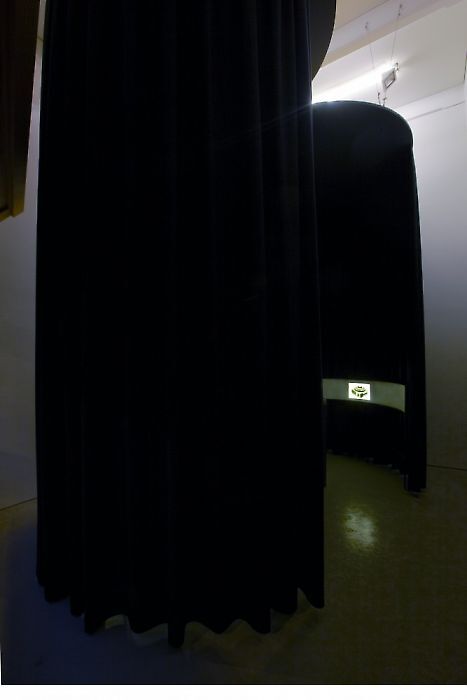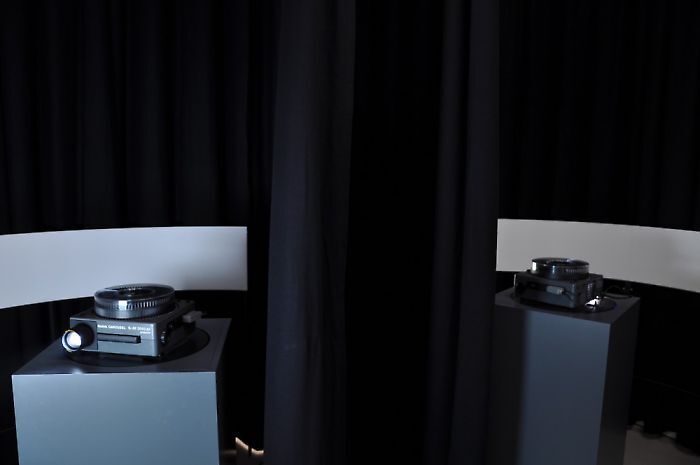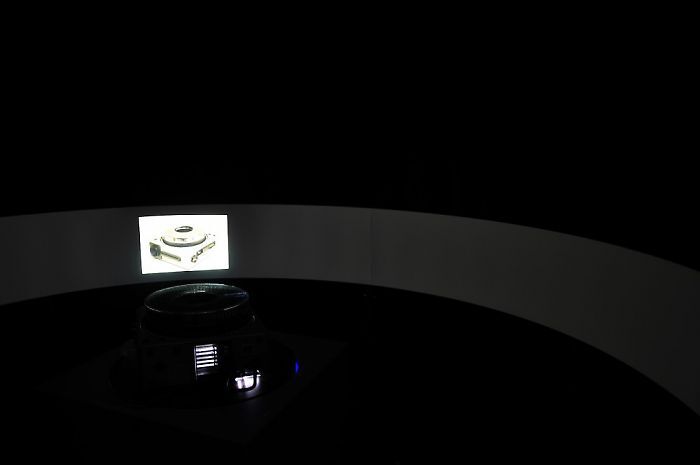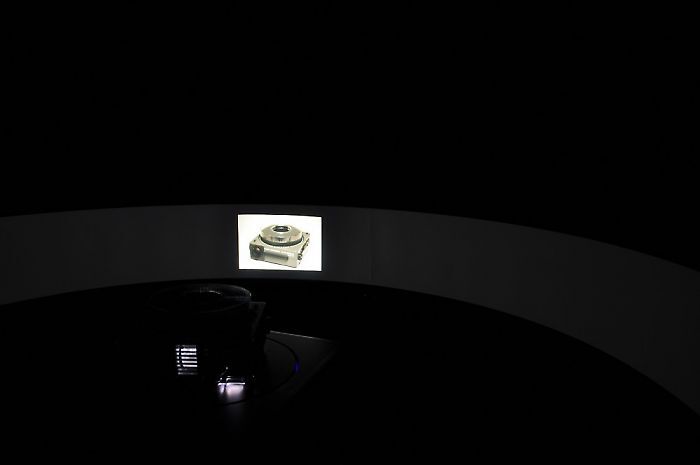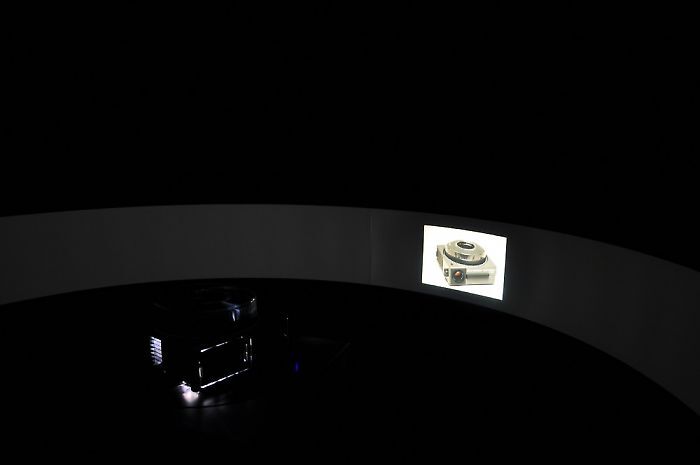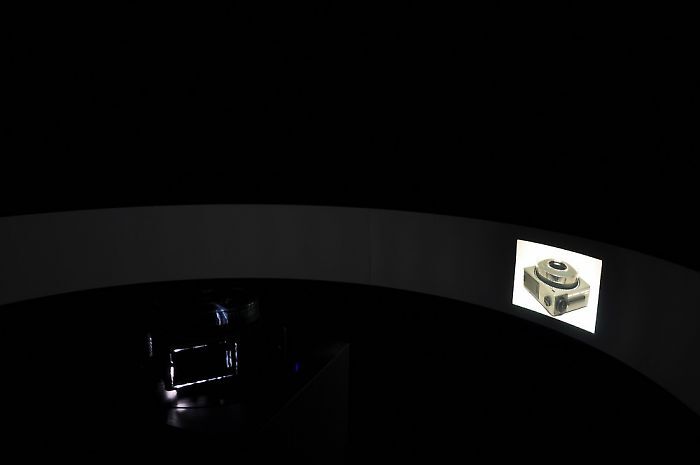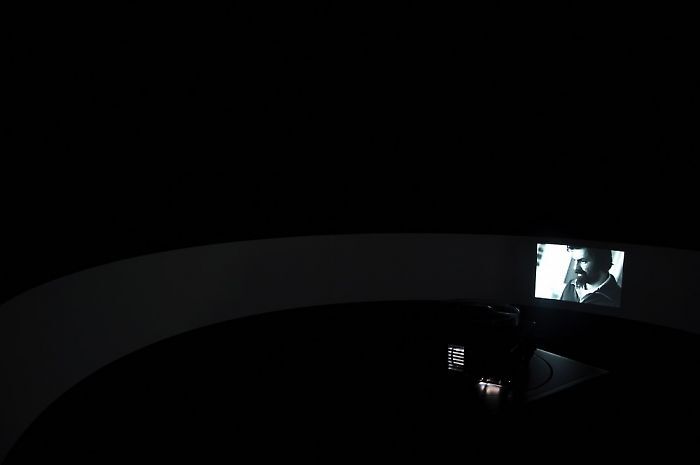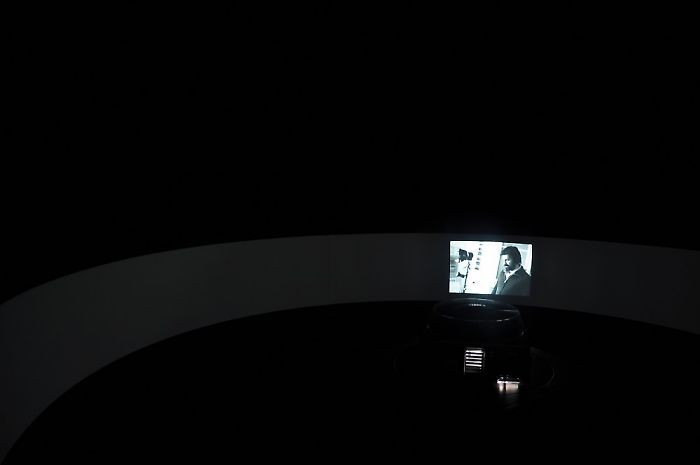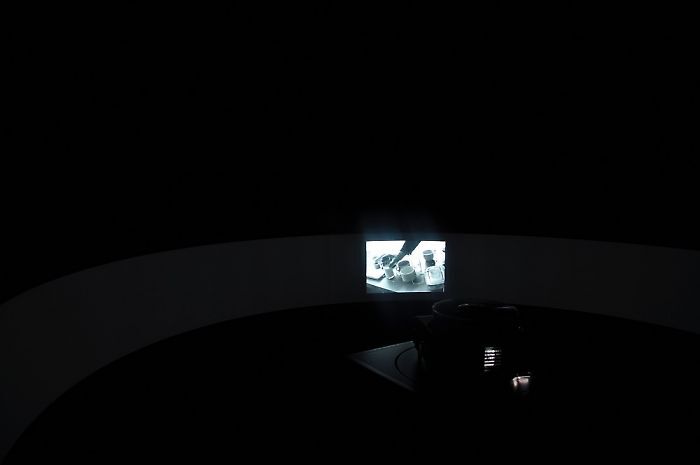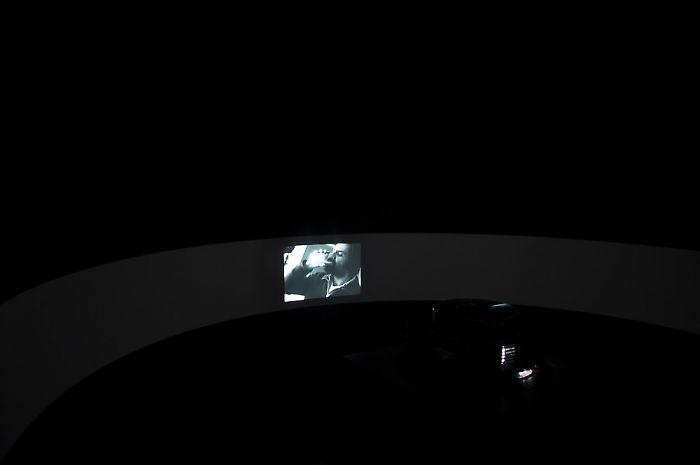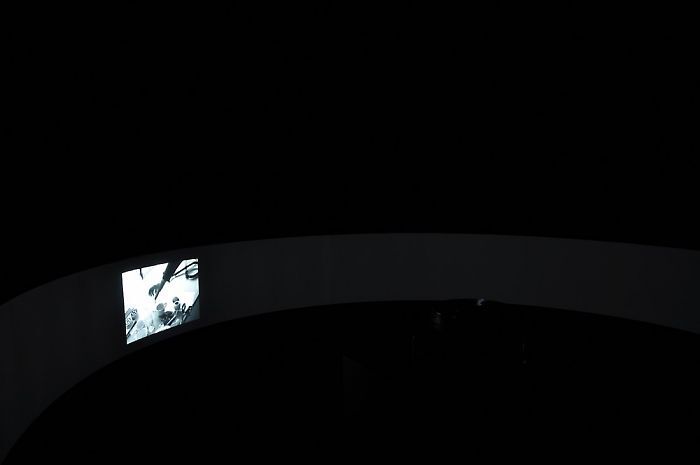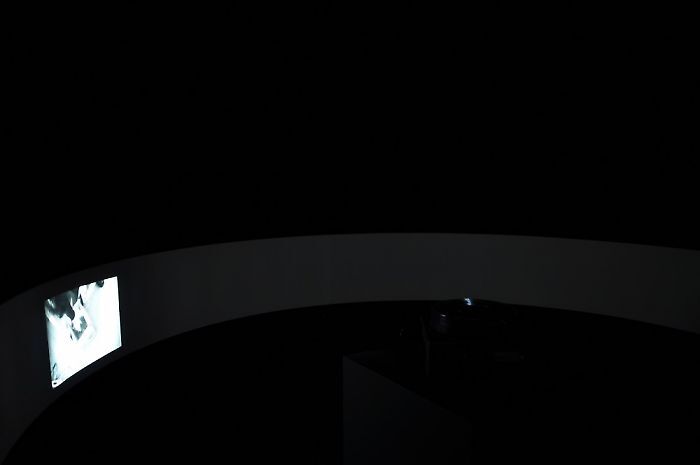—
Ján Mančuška
This is how it really happened
Ján Mančuška was born in 1972 in Bratislava, Slovakia. He lives and works in Prague and Berlin. His works have been presented in numerous international individual exhibitions, including Kunsthalle Basel, Frankfurter Kunstverein, Meyer Riegger Galerie in Karlsruhe, Andrew Kreps Gallery in New York, ZKM Karlsruhe, MUMOK in Vienna, Tel Aviv Art Museum, and Neuer Berliner Kunstverein. In 2005, Mančuška was invited to represent the Czech Republic at their pavilion at the 51st Venice Biennial.
After already showing the artist’s work in 2008 at Georg Fine Arts in the group show [Scene Missing], we now present Ján Mančuška with an individual show at Georg Kargl BOX. This work is an installation that was especially constructed for this space, consisting of two circular fabrics hanging from the ceiling, creating two cylindrical spaces that intersect with one another. A projector is located on a pivoting platform. They rotate step by step in a semicircle synchronously with the images projected. The two slide projectors each show different cycles of images that repeat in an endless loop.
The images in the first semicircle focus on the projector itself. Its movement and the constant change of perspective resulting from the rotating platform can also be found in the sequence of the projected images. This means that the projector can always be seen in its actual momentary position. Mančuška here pursues an ontological approach, the projector as an object points toward itself and its truth. The medium itself, as it were, becomes an agent. The second series of images are photographs that emerged in collaboration with the photographer Martin Polak. Here, we can see different collage-like arrangements of everyday objects, like pencils, glasses, paper, and plates. Without any recognizable context, sentence fragments and words appear on and between these objects, and it is left to the beholder to make a link between them.
At the start of the series of slides, the fragments produce the following sentence:
“This text is written in such a way as to present a story, which, however, only resembles a story that really happened. At the time, though, it was not yet a story because in order to be a story it must have a beginning and an end. Because the goings-on around carry on continuously without a beginning and an end, we would not remember anything or even forget everything else...”
Here too, the projector moves step-by-step in a semi-circle, forward and back. At a certain point, a person, the artist himself, surfaces in the photographs and begins to rearrange the different objects and text fragments, whereby another story and/or a different content emerges, differing from the original sentence constellation. Mančuška uses narrative structures and becomes the author of a story that changes while being narrated, that is, as one image follows the next. The only constants are the word fragments themselves, which are torn from their context, and can be rearranged free of meaning and context. The beholder plays an important role here, not only passively taking place in the event, but also in that he or she can individually develop a personal story using the individual elements. Just like the projector, here too the focus is placed on the medium itself. The narration itself and its construction become the subject. They are reduced to individual fragments, but a reference to a seemingly non-existent whole, a story remains. Through the projections that move through space, the artist works in a space between photography and the moving image. This allows him to provide his work with a temporal and above all spatial component.
The exhibition space becomes a stage for his installation in which text, film, space, and time play a central role, as well as perception and self-reflection. At issue here is a very individual work of the artist, who narrates a very personal story, but by changing it and reconstituting it, offers the beholder a space and an opportunity to participate in this process. With the help of cinematographic techniques, he stages a setting that the beholders can wander through and can participate in, whereby the work becomes a very individual event for all participants.
Text: Jane Weiss
Translation: Brian Currid, www.zweisprachkunst.de
Inquiry
Please leave your message below.
